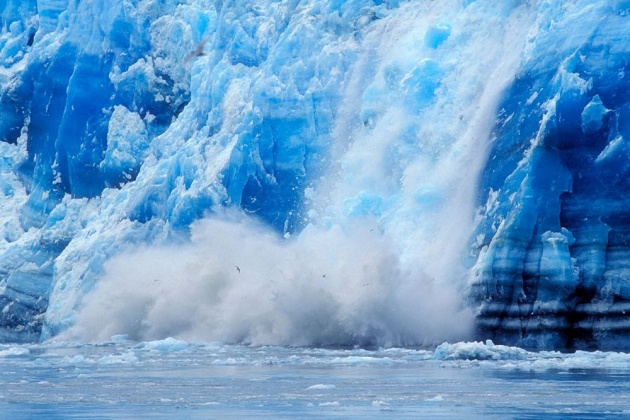 It is time to start preparing for a world more than 2 °C warmer than now. The UN’s own analysis of what countries are offering to do to limit greenhouse gas emissions shows they fall far short of what’s required. In fact, they suggest the world will have emitted enough carbon dioxide to warm the planet 2 °C by around 2036. These offers, formally known as Intended Nationally Determined Contributions or INDCs, will be the basis of
It is time to start preparing for a world more than 2 °C warmer than now. The UN’s own analysis of what countries are offering to do to limit greenhouse gas emissions shows they fall far short of what’s required. In fact, they suggest the world will have emitted enough carbon dioxide to warm the planet 2 °C by around 2036. These offers, formally known as Intended Nationally Determined Contributions or INDCs, will be the basis of the global treaty on climate change to be finalised in Paris in December. It was always clear that this treaty would not go nearly far enough to limit warming to 2 °C by 2100, but now the numbers are in. Ahead of the meeting, 119 INDCs have been submitted, representing 147 countries and 88 per cent of current emissions. The UN has now released a synthesis report analysing what impact they will have. It concludes that even if countries stick to them, annual global emissions will hit 43 gigatonnes of carbon dioxide (GtCO2) by 2030 – and will still be rising. It has been calculated that to have a 66 per cent chance of limiting warming to 2 °C, cumulative emissions from 2011 must be limited to 1000 GtCO2. The UN report, however, says we’ll have burned through 75 per cent of this carbon budget by 2030. That means we could only emit another 250 GtCO2 after 2030 – which means we’ll bust the budget in around 2036 assuming emissions stay above 40 GtCO2 per year. “I think it is clear that the INDCs will fall well short of what is required for any reasonable probability of avoiding 2 °C,” says Alice Bows-Larkin of the Tyndall Centre for Climate Change Research in Manchester, UK. And what happens after 2030 is crucial, too, she says. “We can’t assume that emissions will immediately decline.” At a meeting in London on 28 October, New Scientist asked the chief UN climate negotiator, Christiana Figueres, if it was now time for the world to accept that limiting warming to 2 °C is unrealistic and to start preparing for even greater warming. Figueres vehemently rejected this idea. “Would you want that for your children,” she responded. “This is about the quality of life on this planet.” The Paris treaty would “build a pathway” to 2 °C, she said, by paving the way for further cuts. This claim is repeated in the official UN press release accompanying the latest report, which says the INDCs “keep the door open to” the 2 °C limit. But the grim numbers in the report tell a very different story. So why do some reports still claim that 2 °C is achievable? The answer is that they almost always assume that the world will resort to geoengineering and somehow suck vast quantities of CO2 out of the atmosphere, so-called “negative emissions”. But many scientists are extremely sceptical about the idea that this can be done on the stupendous scale required. Even if it is now too late to limit warming to 2 °C, we may at least be able to keep it well under 4 °C by 2100. Independent analyses of the INDCs suggest they could put the world on track to limit warming to between 2.7 and 3.5 °C by 2100, depending on what assumptions are made about emissions after 2030. The 2.7 °C figure does not depend on negative emissions, says Bill Hare, head of the Climate Analytics group that came up with the figure.
the global treaty on climate change to be finalised in Paris in December. It was always clear that this treaty would not go nearly far enough to limit warming to 2 °C by 2100, but now the numbers are in. Ahead of the meeting, 119 INDCs have been submitted, representing 147 countries and 88 per cent of current emissions. The UN has now released a synthesis report analysing what impact they will have. It concludes that even if countries stick to them, annual global emissions will hit 43 gigatonnes of carbon dioxide (GtCO2) by 2030 – and will still be rising. It has been calculated that to have a 66 per cent chance of limiting warming to 2 °C, cumulative emissions from 2011 must be limited to 1000 GtCO2. The UN report, however, says we’ll have burned through 75 per cent of this carbon budget by 2030. That means we could only emit another 250 GtCO2 after 2030 – which means we’ll bust the budget in around 2036 assuming emissions stay above 40 GtCO2 per year. “I think it is clear that the INDCs will fall well short of what is required for any reasonable probability of avoiding 2 °C,” says Alice Bows-Larkin of the Tyndall Centre for Climate Change Research in Manchester, UK. And what happens after 2030 is crucial, too, she says. “We can’t assume that emissions will immediately decline.” At a meeting in London on 28 October, New Scientist asked the chief UN climate negotiator, Christiana Figueres, if it was now time for the world to accept that limiting warming to 2 °C is unrealistic and to start preparing for even greater warming. Figueres vehemently rejected this idea. “Would you want that for your children,” she responded. “This is about the quality of life on this planet.” The Paris treaty would “build a pathway” to 2 °C, she said, by paving the way for further cuts. This claim is repeated in the official UN press release accompanying the latest report, which says the INDCs “keep the door open to” the 2 °C limit. But the grim numbers in the report tell a very different story. So why do some reports still claim that 2 °C is achievable? The answer is that they almost always assume that the world will resort to geoengineering and somehow suck vast quantities of CO2 out of the atmosphere, so-called “negative emissions”. But many scientists are extremely sceptical about the idea that this can be done on the stupendous scale required. Even if it is now too late to limit warming to 2 °C, we may at least be able to keep it well under 4 °C by 2100. Independent analyses of the INDCs suggest they could put the world on track to limit warming to between 2.7 and 3.5 °C by 2100, depending on what assumptions are made about emissions after 2030. The 2.7 °C figure does not depend on negative emissions, says Bill Hare, head of the Climate Analytics group that came up with the figure.
The climate fact no one will admit: 2 °C warming is inevitable
Posted on at



